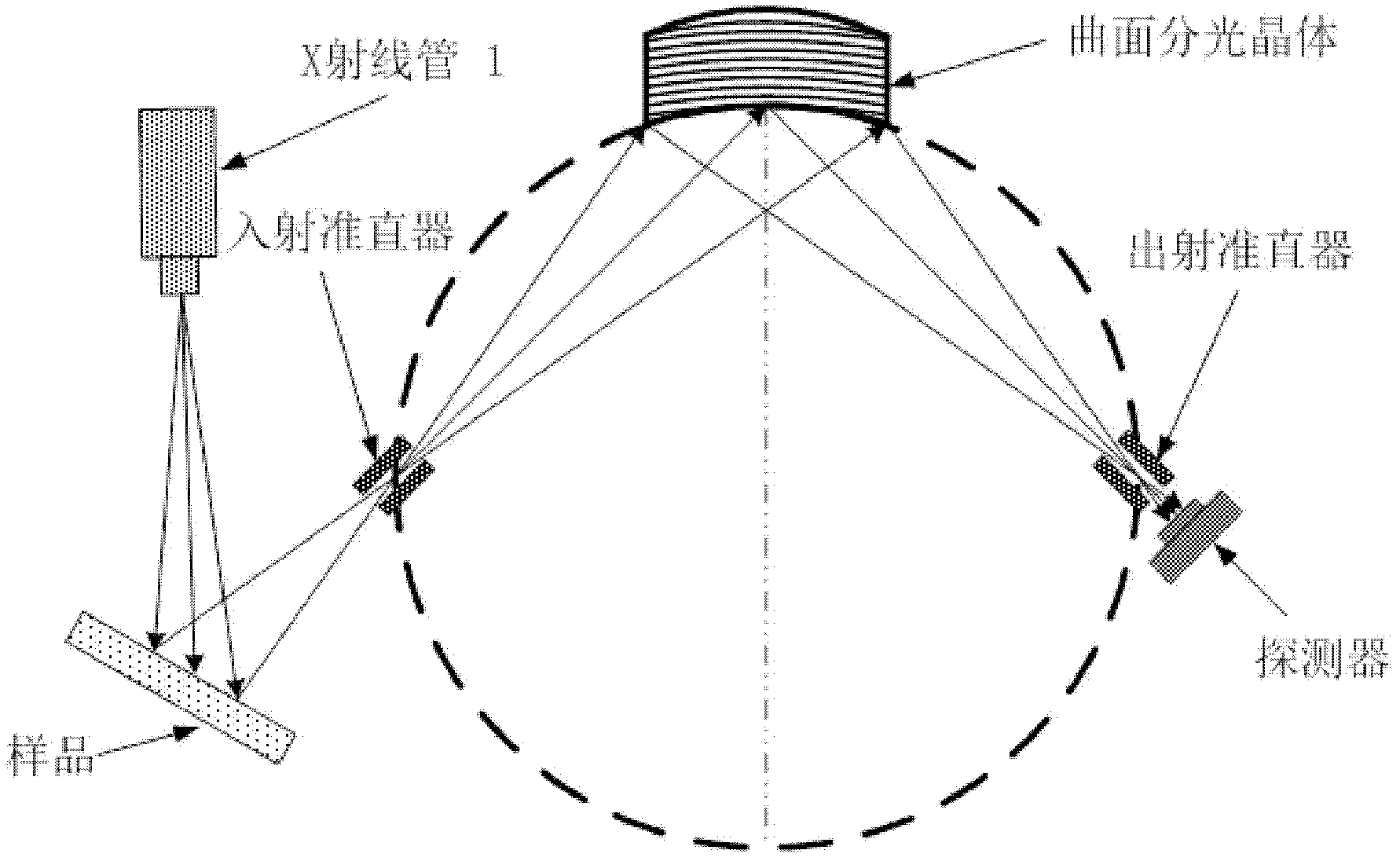Non-scanning type wavelength dispersion X-ray fluorescence spectrometer
A fluorescence spectrometer and wavelength dispersion technology, which is applied in the field of X-ray fluorescence spectrometer, can solve the problems of poor operation stability and adjustment convenience, inability to analyze multiple material components at the same time, low effective utilization of X-rays, etc., and achieve simple structure and volume Small, easy to upgrade and adjust, and improve the effect of effective utilization
- Summary
- Abstract
- Description
- Claims
- Application Information
AI Technical Summary
Problems solved by technology
Method used
Image
Examples
Embodiment 1
[0044] In this embodiment, a non-scanning wavelength dispersive X-ray fluorescence spectrometer (such as figure 1 shown), is in the traditional scanning wavelength dispersive X-ray fluorescence spectrometer (such as figure 2 (shown) is conceived and designed on the basis of: "small aperture diaphragm 2" is used to replace the traditional "incident collimator + exit collimator" in terms of aperture; in terms of beam splitting system, "cylindrical ring beam splitter crystal 3" is used to replace the traditional "Plane beam-splitting crystal" or "curved beam-splitting crystal"; the detector uses "photon counting imaging detector 4" to replace the traditional "proportional counter" or "scintillation counter" or "semiconductor detector"; Angle measuring device and displacement mechanism (or rotation mechanism).
[0045] like figure 1 As shown, the X-ray fluorescence spectrometer is mainly composed of an X-ray tube 1, an aperture diaphragm 2, a cylindrical ring spectroscopic crys...
Embodiment 2
[0065] This embodiment is basically the same as Embodiment 1, the difference is that on the basis of the photon counting imaging detector 4 described in Embodiment 1, a semiconductor layer can be added between the output end of the MCP and the position-sensitive anode, and the MCP There is a gap between the output terminal and the semiconductor layer, the semiconductor layer is plated on the insulating substrate, and the DC high-voltage power supply is electrically connected to the semiconductor layer through high-voltage leads or conductive electrodes (such as Figure 5 shown). At this time, the above step S540, that is, the physical process of collecting the electron cloud by the position-sensitive anode, evolves into: the electron cloud first crosses to the semiconductor layer under the action of the accelerating bias electric field, and then is induced to the position-sensitive anode through charge induction.
Embodiment 3
[0067] This embodiment is basically the same as Embodiment 1, the difference is: on the basis of the X-ray fluorescence spectrometer described in Embodiment 1, according to the power consumption of X-ray tube 1, it can be equipped with a corresponding high-voltage generator and voltage regulator Steady flow device and cooling system to meet the actual application needs.
PUM
 Login to View More
Login to View More Abstract
Description
Claims
Application Information
 Login to View More
Login to View More - R&D
- Intellectual Property
- Life Sciences
- Materials
- Tech Scout
- Unparalleled Data Quality
- Higher Quality Content
- 60% Fewer Hallucinations
Browse by: Latest US Patents, China's latest patents, Technical Efficacy Thesaurus, Application Domain, Technology Topic, Popular Technical Reports.
© 2025 PatSnap. All rights reserved.Legal|Privacy policy|Modern Slavery Act Transparency Statement|Sitemap|About US| Contact US: help@patsnap.com



